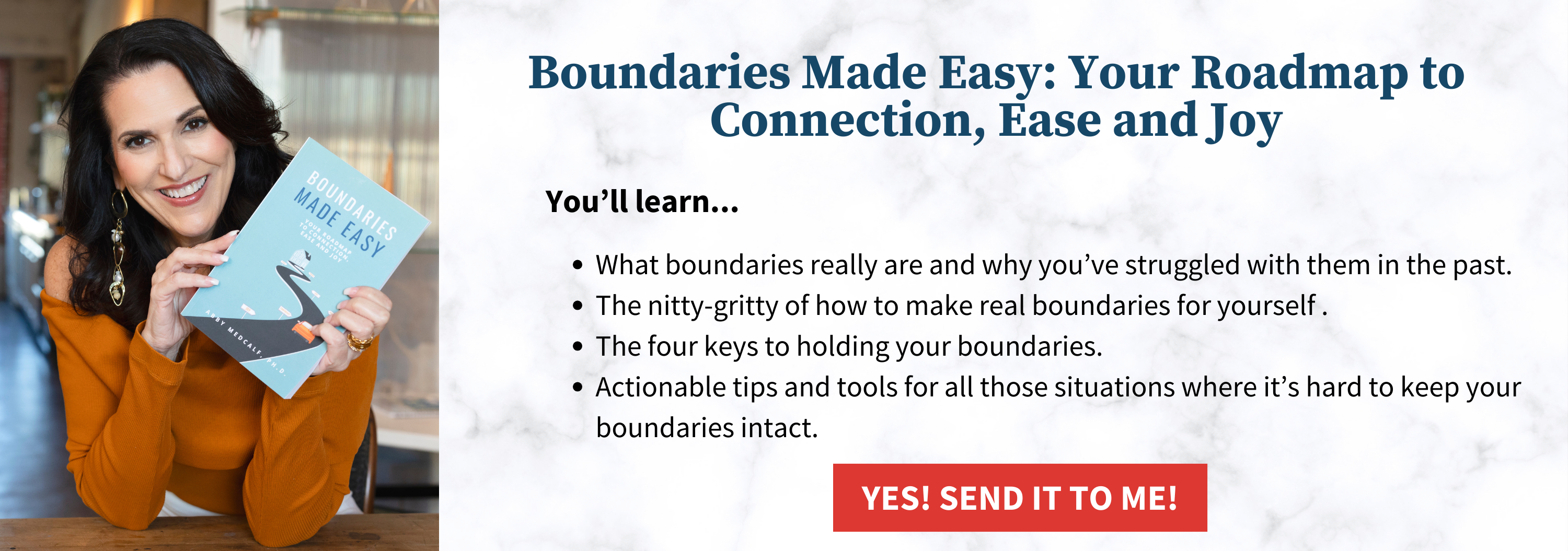
You know those moments that make you pause and think, “Wait, am I being ridiculous right now?” You feel off, but you can’t quite explain why. The conversation wasn’t overtly mean. You weren’t screamed at. But still… something felt wrong. Well, you might be experiencing micro-gaslighting. We already know that gaslighting is a form of emotional manipulation meant to distort your sense of reality. But micro-gaslighting is sneakier. It hides behind sarcasm, “jokes,” and well-meaning comments that, over time, make you question yourself in small, cumulative ways. Today we’ll discuss the differences between gaslighting and micro-gaslighting, why it happens, whether you might be doing it yourself and, as always, my top six action steps to move forward.
8-minute-read
What’s the Difference Between Gaslighting and Micro-Gaslighting?
Traditional gaslighting is often:
- Intentional (though not always)
- Overt and persistent
- Designed to dominate or control
- Patterned in abusive relationships
- Accompanied by power imbalances
Think:
- “You’re remembering it wrong. That never happened.”
- “You’re crazy and everyone else thinks so, too.”
- “I know what you really meant, even if you don’t.”
This level of gaslighting is a psychological mind game that results in a completely faulty sense of your reality, memory, and emotional truth.
Micro-gaslighting, on the other hand, is:
- Often unintentional
- More socially acceptable or normalized
- Casual, habitual, and embedded in everyday communication
- More common in “functional” relationships, workplaces, and friendships
- And the key difference is that it’s less about control and more about emotional avoidance or discomfort
Think:
- “Wow, you’re really sensitive.”
- “Calm down, I was just teasing.”
- “You always take things the wrong way.”
The intent might not be malicious but the impact is still real. Micro-gaslighting teaches you to distrust yourself in a kind of slow motion.
Examples of Micro-Gaslighting in Everyday Life
- “You’re overthinking it. It was just a text.”
- “You always make such a big deal out of nothing.”
- “It must be that time of the month again.”
- “You’re just tired, that’s why you’re acting like this.”
- “You’re being dramatic. I was just teasing you.”
- “You need to lighten up. It’s not that deep.”
These comments don’t seem explosive, but they carry a powerful subtext: Your feelings are invalid. Your perception is flawed. You’re too much. And because they’re sprinkled into otherwise normal interactions, they often slip right past your defenses. Over time, they train you to distrust your gut.
Why Micro-Gaslighting Works (and Hurts)
This isn’t just about being “too sensitive.” There’s science here. When someone invalidates your internal experience often enough, it creates cognitive dissonance as your brain struggles to reconcile what it feels with what it’s being told. That tug-of-war between your emotional truth and someone else’s narrative activates your amygdala, the part of the brain responsible for processing fear and threat.
When the amygdala is triggered repeatedly in close relationships (whether romantic, familial, or professional), it disrupts your sense of safety. It erodes something called interoceptive accuracy, which is your ability to interpret your body’s internal signals correctly (e.g., “Am I feeling anxious… or am I just being difficult?”).
This isn’t just emotional. It’s neurological.
Over time, chronic micro-gaslighting can lead to:
- Self-doubt and confusion
- Difficulty making decisions
- Loss of confidence in memory or judgment
- Increased anxiety and emotional dysregulation
- Feeling like you’re “walking on eggshells”
In short: your nervous system doesn’t know whether to trust you or them. And that’s a dangerous place to live.
This is a great time to tell you that I created a great free giveaway to go with today’s episode. It’s a Relationship Inventory: Emotional Safety Check-In.
Is Micro-Gaslighting a Form of Narcissism?
Not necessarily, but the Venn diagram definitely overlaps. Narcissistic Personality Disorder (NPD) is a clinical diagnosis involving grandiosity, lack of empathy, a need for admiration, and deep insecurities masked by superiority. Gaslighting is often a tool used by people with narcissistic traits to maintain power, control, or the upper hand.
But here’s the catch: you can gaslight without being a narcissist, just like you can yell without being an abuser. Context and patterns matter.
Gaslighting (especially micro-versions) often stems from:
- Poor emotional regulation
- Fear of being “the bad guy”
- Avoidant attachment styles
- Learned behavior from childhood
- Conflict avoidance
- Internalized power dynamics (e.g., gender, race, status)
Micro-gaslighting is often about protecting your reality because it feels threatened by someone else’s emotional expression.
Am I the Gaslighter? (Yes, We’re Going There)
Before you panic, let me say this loud: having a moment of gaslighting doesn’t mean you’re a narcissist. It means you’re human and likely trying to manage your own discomfort in an ineffective way.
We all invalidate people sometimes. We all deflect. We all minimize. If you’re brave enough to ask this question, you’re probably not a full-time manipulator. But here’s what to reflect on:
Common Signs You Might Be Micro-Gaslighting Someone:
- You frequently say, “You’re overreacting,” or “You always twist my words.”
- You tell people to “lighten up” or “stop being so dramatic.”
- You get uncomfortable when others are emotional and try to shut it down.
- You rewrite past conversations to make yourself seem more reasonable.
- You jump to defensiveness rather than curiosity when someone expresses hurt.
It’s OK if this sounds familiar. The goal isn’t to shame yourself, it’s to wake up.
If You’re the One Doing It: What Now?
First, breathe. Then do this:
- Acknowledge the behavior. “I realize I dismissed how you felt just now, and I’m sorry.”
- Pause your defensiveness. “Thank you for telling me that. I want to understand.”
- Look for patterns. Do you tend to invalidate when you feel criticized, ashamed, or afraid? That’s the real wound to explore.
- Build tolerance for emotional discomfort. People gaslight because they’re overwhelmed by someone else’s feelings. Learn to stay present through the squirm.
- Get help if needed. Therapy might be what’s needed. You’re allowed to grow out of this.
You’re not a narcissist for struggling with emotional immaturity or relational anxiety. You’re human. And you can do better, starting now.
What to Do if You’re Being Micro-Gaslit
But what if it’s happening to you? Here’s my six steps to start reclaiming your reality.
1. Validate Yourself First
Before you try to get someone else to validate your experience, you have to validate it for yourself. That means:
- Name what you felt, not what you were told you felt.
- Check in with your body. Did your chest tighten? Did you second-guess yourself immediately? That’s data.
- Practice saying to yourself: “My perception is valid, even if someone else disagrees.”
Micro-gaslighting thrives in self-doubt. Your job is to rebuild internal trust.
2. Track the Pattern
It’s tempting to excuse these moments as one-offs. But micro-gaslighting usually isn’t a blip; it’s a pattern. Start keeping a log (privately and safely) of when these comments or dynamics happen. What was said? How did you feel? What was the result?
Looking at the pattern over time helps you make decisions from clarity instead of chaos.
3. Use Clear, Non-Defensive Language
If you feel emotionally safe enough, name the experience without accusation. Micro-gaslighting often hides behind plausible deniability, so your clarity matters.
Try:
- “When I share how I feel and the response is that I’m overreacting, I end up feeling dismissed.”
- “I’m noticing that when I bring something up, I’m told it’s not a big deal. That’s confusing and painful for me.”
- “I need space to feel what I feel even if you don’t agree with it.”
You’re not asking them to agree with your version of reality, you’re asking for respect within it.
4. Set Emotional Boundaries
Boundaries don’t always mean walking away. Sometimes they mean saying: “I’m not available for conversations where I feel consistently invalidated.” Or, “If this keeps happening, I’ll need to limit our time together.”
Boundaries are about your energy. Your time. Your peace. If you’re constantly questioning yourself after talking to someone, that’s not connection, that’s erosion. And boundaries help you stop the slow leak.
Learn how to create and hold healthy, loving boundaries with my book Boundaries Made Easy: Your Roadmap to Connection, Ease and Joy
5. Find Reflective Spaces
Being micro-gaslit makes you feel like you can’t trust yourself. So, while you’re rebuilding that self-trust, borrow some perspective from people who do listen well.
That might be:
- A therapist
- A trusted, non-gaslighty friend
- A journal
- Even a voice memo to yourself to replay later
Having your thoughts reflected back to you clearly, without minimization or distortion, helps you untangle what’s yours from what isn’t.
6. Stay Grounded in Your Values
When someone tries to shrink your reality, it’s easy to feel unmoored. So come back to this: What kind of relationships do you want? What kind of communicator do you want to be? What do you need to feel emotionally safe? Let those answers, not their defensiveness, guide your next move.
Wrap Up
Micro-gaslighting is a wake-up call. Whether you’re on the receiving end or realizing you’ve been doing it yourself, micro-gaslighting is an invitation. It’s a chance to get curious, not cruel. To build clarity instead of blame. To communicate instead of control.
You don’t have to let those tiny paper cuts become scars.
For the One Love Collective Community
Tier I:
- Journaling Prompts
- Reflection Worksheet: Spot the Pattern
- QUIZ: Am I Being Micro-Gaslit or Am I Doing It?
Tier II:
- Guided Visualization
- Repair Guide: What to Do If You’ve Micro-Gaslit Someone
- Where Did I Learn to Question Myself? Worksheet
Tier III:
- Language Swap Guide: From Micro-Gaslighting to Mindful Speech
- Scripts for When You Doubt Yourself
- How to State Boundaries Without Drama Worksheet
Get all the resources above for just $8! Download the bundle now.
Resources for Micro-Gaslighting: The Tiny Cuts That Undermine You
Join Abby’s One Love Community on Patreon!
Download the complete workbook for this episode for only $8
Signs That Someone Is Gaslighting You
What You Need to Know About Defense Mechanisms
The Secret to Managing Your Emotions: A Step-by-Step Guide
How Your Attachment Style Affects Your Personal Relationships
What to Do If Your Partner Is Conflict Avoidant Plus Dealing with Your Own Conflict Avoidance
Boundaries Made Easy: Your Roadmap to Connection, Ease and Joy by Dr. Abby Medcalf
Köteles, F. (2021). What Can We Sense? Interoceptive Accuracy. In: Body Sensations. Springer, Cham. https://doi.org/10.1007/978-3-030-63201-4_4







